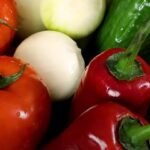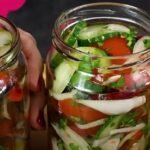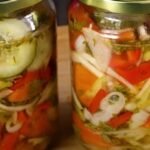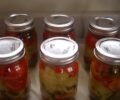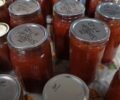Ultimate Guide to Canning Tomatoes, Cucumbers, Onions, and Peppers
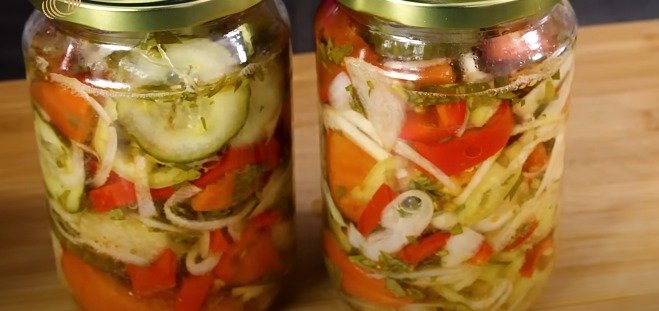
1
Canning is a fantastic way to preserve the freshness and flavor of your favorite vegetables, allowing you to enjoy seasonal produce all year round. If you're looking to stock up on delicious home-canned tomatoes, cucumbers, onions, and peppers without the need for freezing or electricity, this guide is perfect for you!
Why Can Your Vegetables?
Canning is not just about preserving vegetables—it's about enhancing their quality. Home-canned vegetables are often fresher and more flavorful than store-bought alternatives, which might be picked before they fully ripen. By canning your own vegetables, you ensure they are packed with natural goodness and are free from preservatives.
Ingredients You'll Need:
Tomatoes: 2 large
Cucumbers: 1 large
Red Peppers: 2
Green Pepper: 1
Onions: 2
Parsley: A handful
Salt: 1 teaspoon
Vinegar (9%): 1 teaspoon per jar
Step-by-Step Canning Process:
Preparation:
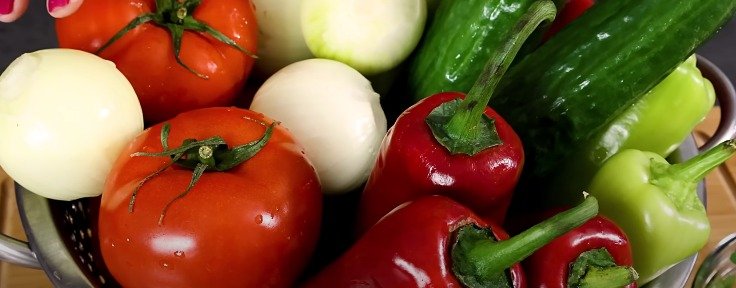
2
Start by washing your vegetables thoroughly under running water. This ensures they are free from any dirt or residues.
Slice the tomatoes, cucumber, and peppers into manageable pieces. For a balanced flavor, cut two red peppers, one green pepper, and a large cucumber.
Cooking:
Add the chopped vegetables to a pot. Include 2 onions, finely sliced, and a handful of parsley for added flavor.
Sprinkle a teaspoon of salt over the vegetables and cover the pot. Let the mixture sit for 30-60 minutes to allow the vegetables to release their natural juices.
Canning:
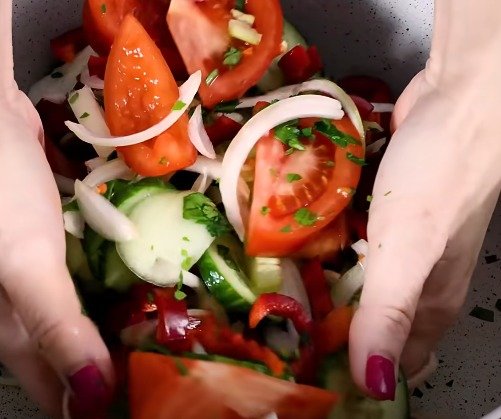
3
Once the vegetables have released enough juice, start filling clean, dry glass jars with the vegetable mixture.
Add one teaspoon of 9% vinegar to each jar. This will help preserve the flavor and texture of the vegetables.
Wipe the rims of the jars with a clean cloth to ensure a proper seal.
Processing:
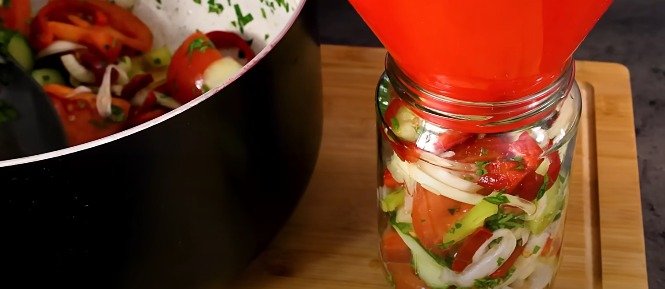
4
Place a cloth on the bottom of a large Once the vegetables have released enough juice, start filling clean, dry glass jars with the vegetable mixture.
Add one teaspoon of 9% vinegar to each jar. This will help preserve the flavor and texture of the vegetables.
Wipe the rims of the jars with a clean cloth to ensure a proper seal.
Processing:
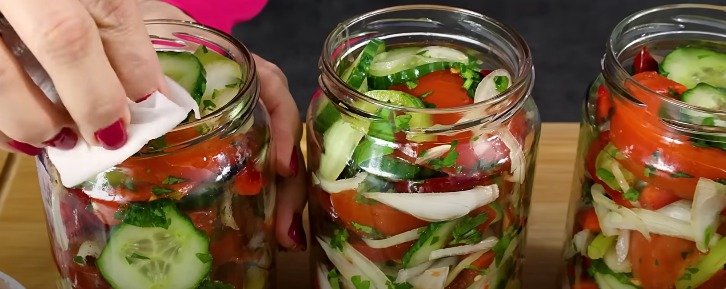
5
Place a cloth on the bottom of a large pan to prevent the jars from touching the bottom and possibly cracking.
Arrange the jars in the pan and pour water up to the height of the lids.
Bring the water to a boil, then reduce the heat and simmer for 30 minutes.
Storage:
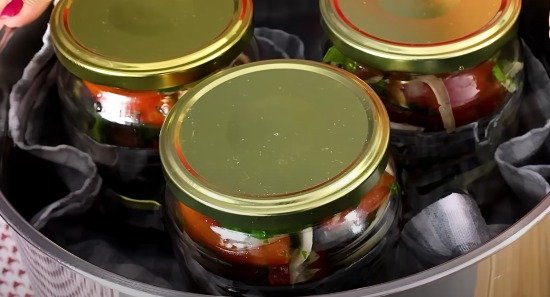
6
Carefully remove the jars from the pan and let them cool completely.
Store the cooled jars in a dark, cool place. Properly canned vegetables can last up to a year.
Tips for Success:
Ensure a Proper Seal: Make sure the lids are tightly closed to prevent any air from entering. This will help avoid spoilage.
Monitor Storage Conditions: Keep your canned vegetables in a cool, dark place to maximize their shelf life.
happy canning

Ingredients
Directions
1
Canning is a fantastic way to preserve the freshness and flavor of your favorite vegetables, allowing you to enjoy seasonal produce all year round. If you're looking to stock up on delicious home-canned tomatoes, cucumbers, onions, and peppers without the need for freezing or electricity, this guide is perfect for you!
Why Can Your Vegetables?
Canning is not just about preserving vegetables—it's about enhancing their quality. Home-canned vegetables are often fresher and more flavorful than store-bought alternatives, which might be picked before they fully ripen. By canning your own vegetables, you ensure they are packed with natural goodness and are free from preservatives.
Ingredients You'll Need:
Tomatoes: 2 large
Cucumbers: 1 large
Red Peppers: 2
Green Pepper: 1
Onions: 2
Parsley: A handful
Salt: 1 teaspoon
Vinegar (9%): 1 teaspoon per jar
Step-by-Step Canning Process:
Preparation:

2
Start by washing your vegetables thoroughly under running water. This ensures they are free from any dirt or residues.
Slice the tomatoes, cucumber, and peppers into manageable pieces. For a balanced flavor, cut two red peppers, one green pepper, and a large cucumber.
Cooking:
Add the chopped vegetables to a pot. Include 2 onions, finely sliced, and a handful of parsley for added flavor.
Sprinkle a teaspoon of salt over the vegetables and cover the pot. Let the mixture sit for 30-60 minutes to allow the vegetables to release their natural juices.
Canning:

3
Once the vegetables have released enough juice, start filling clean, dry glass jars with the vegetable mixture.
Add one teaspoon of 9% vinegar to each jar. This will help preserve the flavor and texture of the vegetables.
Wipe the rims of the jars with a clean cloth to ensure a proper seal.
Processing:

4
Place a cloth on the bottom of a large Once the vegetables have released enough juice, start filling clean, dry glass jars with the vegetable mixture.
Add one teaspoon of 9% vinegar to each jar. This will help preserve the flavor and texture of the vegetables.
Wipe the rims of the jars with a clean cloth to ensure a proper seal.
Processing:

5
Place a cloth on the bottom of a large pan to prevent the jars from touching the bottom and possibly cracking.
Arrange the jars in the pan and pour water up to the height of the lids.
Bring the water to a boil, then reduce the heat and simmer for 30 minutes.
Storage:

6
Carefully remove the jars from the pan and let them cool completely.
Store the cooled jars in a dark, cool place. Properly canned vegetables can last up to a year.
Tips for Success:
Ensure a Proper Seal: Make sure the lids are tightly closed to prevent any air from entering. This will help avoid spoilage.
Monitor Storage Conditions: Keep your canned vegetables in a cool, dark place to maximize their shelf life.
happy canning

Leave a Review
Please log in or register for a new account in order to leave a review.

